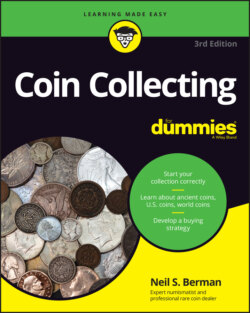Читать книгу Coin Collecting For Dummies - Neil S. Berman - Страница 25
Commemorative coins
ОглавлениеIn the 1930s, numerous proposals for commemorative coins appeared before the U.S. Congress. Although many of the coinage bills had narrow appeal, they became law, and the U.S. Mint dutifully struck the coins (including the one shown in Figure 2-1), which were sold through distributors who added a premium above the face value of the coins. Members of the collecting public paid a premium for the coins and were happy to add them to their collections. But the U.S. Mint, producing a new coin every few months, almost seemed to be saying to collectors, “Here’s the latest commemorative. Please send your money — and by the way, there’s another commemorative coin coming out next month, so please be ready to send your money for that one as well.”
FIGURE 2-1: A commemorative coin.
Collectors complained that too many different coins were being produced and that speculators were manipulating the markets and prices. Both situations were true. The U.S. Mint got the hint, the flood of commemoratives slowed to a trickle, and collectors were happy again. In the late 20th century, the Mint went back to making tons of commemorative coins, and collectors started complained again. Keeping up with the new issues was becoming a costly proposition. Nevertheless, many new people were attracted to coin collecting by often-beautiful commemorative coins, just as they are by today’s commemorative coin designs. (In Chapter 13, I tell you more about these interesting coins.)
